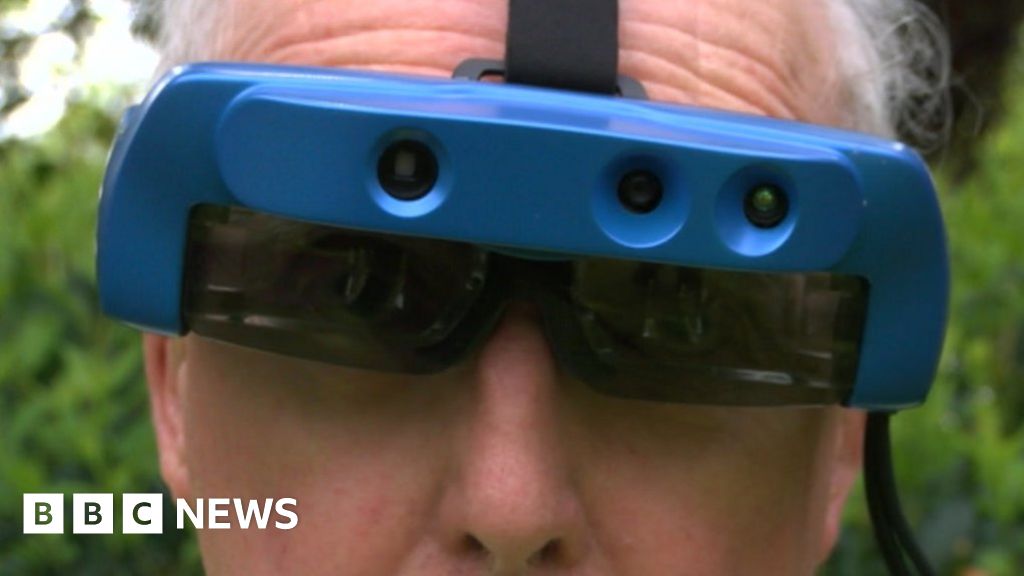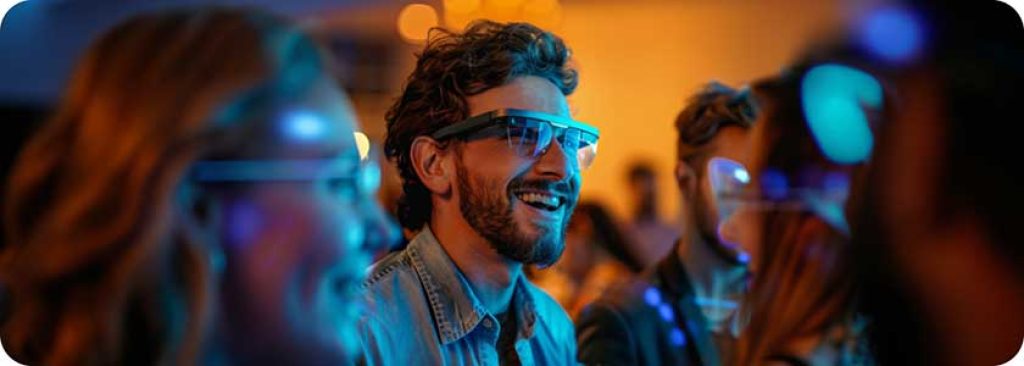Enhancing Ease Of Access Through Assistive Technology for the Blind
The assimilation of assistive modern technology for the blind stands for a crucial development in access, fundamentally changing just how people browse their atmospheres and involve with society. From screen viewers to innovative smart canes, these devices not just improve self-reliance however also promote inclusivity in numerous rounds of life. As we check out the diverse kinds of assistive tools and their substantial effect on daily living, it becomes vital to examine how recurring technical developments are reshaping the landscape of assistance for the blind neighborhood. What ramifications do these developments hold for the future of accessibility?
Introduction of Assistive Technology
Assistive modern technology refers to a variety of gadgets and software program made to enhance the capabilities of individuals with disabilities, including those that are visually damaged or blind. This modern technology plays an important function in promoting self-reliance and improving the lifestyle for users. By offering different approaches for accessing details and performing everyday jobs, assistive innovation equips individuals to navigate their atmospheres a lot more successfully.
The growth and execution of assistive modern technology welcome a variety of principles aimed at cultivating access. These principles include user-centered design, which focuses on the needs and preferences of the person, and the assimilation of modern technology into everyday activities. Such developments ensure that assistive tools are not only practical however additionally instinctive and very easy to utilize.
Moreover, assistive modern technology incorporates a varied range of solutions, from low-tech options like magnifiers to modern developments such as screen visitors and Braille screens. The continuous advancement of this field is driven by the need to address the unique challenges faced by people with visual impairments (Wearable technology for low vision). As technology remains to advancement, the possibility for improving accessibility and advertising inclusivity continues to be encouraging, inevitably adding to a much more equitable society

Sorts Of Assistive Devices
Many sorts of assistive tools are available to support people that are blind or visually impaired, each developed to address details requirements and obstacles. These tools can be broadly categorized into three main kinds: low-tech, mid-tech, and high-tech services.
Low-tech gadgets consist of products such as magnifiers, Braille labels, and tactile maps. These are relatively easy tools that improve the individual's capability to engage with their setting without calling for complex innovation.
Mid-tech gadgets commonly entail a lot more innovative functions, such as digital magnifiers and mobile Braille note-takers. These tools can offer functionalities like speech output, allowing customers to access information more successfully.

Effect on Daily Living
The accessibility of different assistive gadgets substantially improves the high quality of life for individuals who are blind or visually impaired, influencing their day-to-day living in extensive means. By incorporating innovations such as screen visitors, Braille displays, and audio description solutions right into their regimens, individuals acquire greater autonomy and freedom. These devices assist in access to info, enabling individuals to do everyday jobs, such as reading emails, navigating public rooms, and appreciating media content.
Moreover, assistive devices encourage individuals to engage more totally in social communications and neighborhood activities. The capacity to use smartphones outfitted with availability features enables for smooth interaction and connection with others. This connection promotes a sense of belonging and lowers sensations of isolation.
In specialist settings, assistive technology sustains productivity by permitting individuals to full job tasks effectively. Tools like voice recognition software program and specialized zoom tools web link allow users to take part in the workforce on equivalent footing with their sighted peers.

Advancements in Modern Technology
Current technical improvements have actually substantially transformed the landscape of tools available for people that are blind or aesthetically impaired. The assimilation of expert system (AI) and artificial intelligence has actually triggered applications that enhance navigation and things acknowledgment. Smartphone applications can now utilize AI to recognize and explain surroundings in real-time, giving individuals with valuable contextual details.
Furthermore, advancements in haptic modern technology have led to the growth of wise walking canes visit homepage furnished with sensors that identify challenges and provide responsive feedback. This equips users to browse their environment with raised confidence and freedom. Developments in text-to-speech software application and braille displays have actually improved the accessibility of digital content, allowing for smooth communication with various media.
Wearable technologies, such as wise glasses, are likewise making strides in helping visual impairment. These gadgets can give augmented truth experiences, superimposing essential details onto the user's field of vision. Jointly, these innovations not just enhance the high quality of life for people that are blind but also promote better incorporation in society. As innovation proceeds to advance, the potential for a lot more transformative tools stays imminent.
Future Trends and Innovations
As technology swiftly progresses, the future of assistive tools for people who are blind holds immense assurance. Developments in synthetic knowledge (AI) and artificial intelligence are positioned to transform the means blind individuals connect with their atmospheres. AI-driven applications are being developed to improve object acknowledgment, permitting individuals to recognize and navigate their environments with greater simplicity and precision.
Furthermore, innovations in haptic feedback modern technology are enabling the development of responsive maps and navigation aids that give real-time information with touch. These innovations not only improve mobility however additionally foster independence. Furthermore, wearable tools equipped with augmented truth (AR) attributes are emerging, providing customers aesthetic information with sound summaries, thereby bridging the space in between the electronic and physical worlds.
In addition, the integration of clever home modern technology offers brand-new opportunities for availability, permitting people to control their living environments with voice commands or mobile phone applications. As cooperation in between technology developers and the blind community continues, the focus on user-centered design will make certain that future innovations are tailored to meet the distinct needs of this populace (Wearable technology for low vision). The trajectory of assistive modern technology assures a much more empowering and inclusive future for individuals who are blind
Final Thought
In final thought, assistive innovation plays a vital duty in boosting ease of access for individuals with visual impairments. The varied selection of tools, consisting of display visitors and wise walking sticks, considerably enhances daily living and fosters independence. Continual innovations in modern technology and user-centered style make sure that these tools cater properly to the special needs of the blind area. As advancements development, enhanced inclusivity and empowerment can be anticipated, inevitably improving the lifestyle for those affected by aesthetic problems.
The combination of assistive technology for the blind stands for a critical advancement in access, essentially modifying exactly how people navigate their settings and engage with culture.Assistive innovation refers to a range of gadgets and software created to enhance the abilities of individuals with specials needs, including those who are aesthetically impaired or blind. Wearable technology for low vision.As innovation swiftly advances, the future of assistive devices for individuals that are blind holds visit homepage tremendous guarantee. The trajectory of assistive modern technology promises a much more empowering and inclusive future for people that are blind
In conclusion, assistive modern technology plays an essential function in boosting ease of access for people with aesthetic impairments.